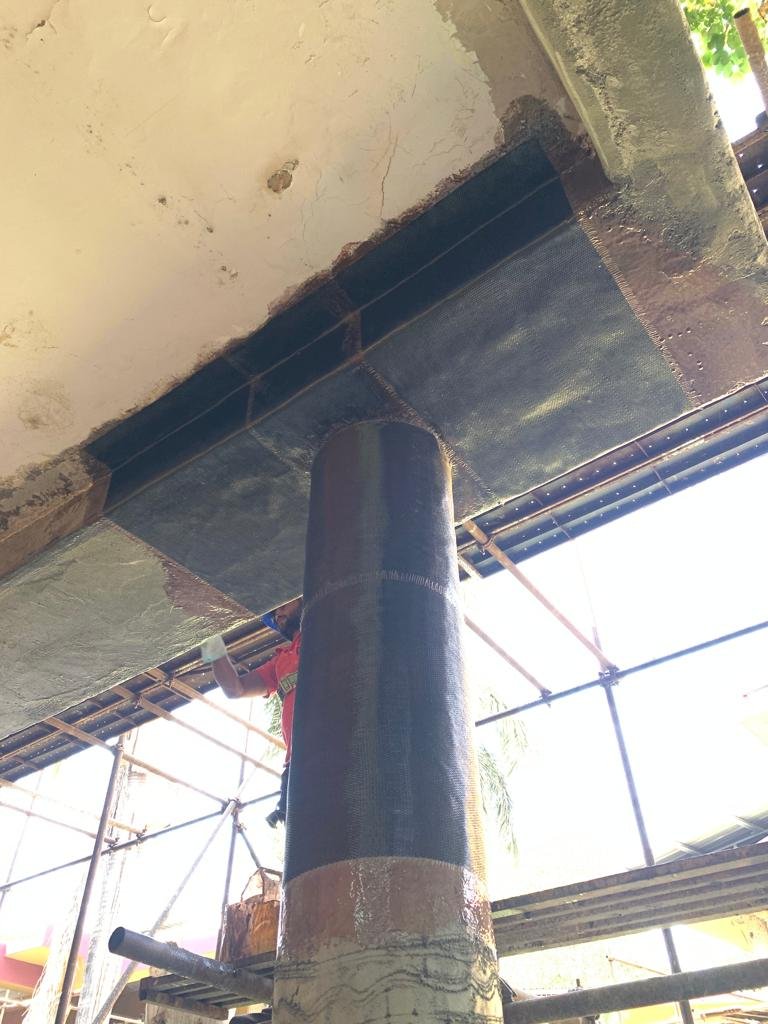In the field of civil engineering, flexural strengthening has become an essential technique to restore and enhance the load-bearing capacity of existing structures. Over time, reinforced concrete beams and slabs may suffer from cracks, corrosion, or increased load requirements. When this happens, engineers employ flexural strengthening methods to improve the structure’s ability to resist bending and maintain safety without requiring complete reconstruction.
Why Flexural Strengthening Is Needed
Concrete structures often deteriorate due to age, environmental exposure, or design deficiencies. As infrastructure demands increase, older buildings and bridges are required to support higher loads. Flexural strengthening is a cost-effective and practical solution that helps extend the service life of these structures. It improves structural performance, reduces deflection, and prevents potential collapse making it a preferred technique for both public and private projects.
Common Causes of Flexural Weakness in Structures
Before applying strengthening methods, it’s vital to understand why structures lose flexural strength. Common reasons include corrosion of reinforcement, poor material quality, excessive loading, seismic activity, and structural damage over time. In some cases, changes in building use or design errors also lead to inadequate flexural capacity. By identifying these causes early, flexural strengthening techniques can be tailored to address specific structural issues effectively.
Traditional Flexural Strengthening Techniques
Historically, steel plates and additional reinforced concrete layers were used to strengthen beams and slabs. While these methods improved load-bearing capacity, they added extra weight and required significant installation time. Over the years, engineers have shifted to more efficient, lightweight, and durable alternatives such as Fiber Reinforced Polymer (FRP) composites, which provide superior strength without increasing structural mass.
Use of Carbon Fiber Wraps in Flexural Strengthening
One of the most advanced and popular methods for flexural strengthening involves using carbon fiber wraps. These materials are lightweight, corrosion-resistant, and highly durable. When bonded to the tension zone of a beam or slab, they increase its flexural capacity significantly. Carbon fiber wrapping also minimizes downtime since installation is faster compared to traditional steel jacketing or concrete overlay methods. This technology is widely used in the rehabilitation of bridges, parking decks, and industrial structures.
Advantages of Flexural Strengthening with FRP Systems
Fiber Reinforced Polymer systems have revolutionized structural repair techniques. They offer high tensile strength, low weight, and resistance to chemicals and moisture. The installation process is non-intrusive and doesn’t affect the building’s aesthetics. Additionally, flexural strengthening using FRP composites allows structures to handle additional live loads, seismic forces, and vibrations. It’s a sustainable solution that aligns with modern construction needs, offering long-term performance with minimal maintenance.
Flexural Strengthening for RCC Beams
In reinforced concrete (RCC) structures, beams play a crucial role in supporting loads. When these beams exhibit cracks or reduced capacity, engineers apply flexural strengthening to restore stability. Techniques like externally bonded FRP sheets, near-surface mounted rods, or steel plate bonding are commonly used. These solutions help beams regain their load-bearing ability and improve the overall safety and durability of the structure.
Strengthening of Slabs and Bridge Decks
Apart from beams, slabs and bridge decks often require flexural strengthening due to continuous load and environmental exposure. FRP laminates or carbon fiber wraps can be applied on the tension side of the slab to enhance its performance. This method not only improves the flexural capacity but also prevents further cracking and deflection. It is especially beneficial for bridge rehabilitation projects where weight addition must be minimized.
Flexural Strengthening in Seismic Retrofitting
India’s growing focus on seismic safety has made flexural strengthening a vital component in retrofitting projects. Structures located in earthquake-prone regions often need enhanced ductility and flexibility to resist seismic forces. Applying FRP composites or carbon fiber wraps increases the energy absorption capacity of columns and beams, thereby reducing the risk of collapse during tremors. It’s a modern, cost-efficient approach to improve earthquake resilience.
Steps Involved in Flexural Strengthening Process
The process of flexural strengthening starts with a detailed structural assessment. Engineers inspect cracks, material conditions, and load capacities. Surface preparation follows, where the concrete is cleaned and leveled for proper bonding. Next, strengthening materials such as FRP sheets or carbon fiber wraps are applied using epoxy resin. Finally, quality tests ensure adhesion strength and performance. This systematic approach guarantees long-term stability and structural safety.
Factors Influencing Flexural Strengthening Design
Designing an effective flexural strengthening plan depends on several factors such as load type, structure age, material condition, and environmental exposure. Engineers also consider deflection limits, bond strength, and durability. By analyzing these parameters, they can choose the most suitable strengthening technique and material type. A well-designed strengthening system ensures both structural performance and economic feasibility.
Cost-Effectiveness and Durability
When compared to demolition or rebuilding, flexural strengthening offers significant cost savings. It allows existing infrastructure to be reused while maintaining safety and performance standards. Moreover, FRP systems have a long service life and require little maintenance. The durability of these materials under various environmental conditions makes them a preferred choice for engineers aiming for sustainable construction solutions.
Applications Across Different Sectors
Flexural strengthening is widely applied across sectors such as transportation, industrial, and commercial construction. Bridges, flyovers, parking structures, and residential buildings benefit from these methods. In India, the growing demand for infrastructure rehabilitation has made flexural strengthening a key service in civil engineering. Its versatility allows it to be used in both minor repairs and large-scale strengthening projects.
Modern Innovations in Flexural Strengthening
Technological advancements continue to improve the efficiency of flexural strengthening techniques. Modern tools like non-destructive testing, computer modeling, and automated wrapping systems help engineers design more precise and effective strengthening solutions. The use of hybrid composites and environmentally friendly resins further enhances sustainability. These innovations have made strengthening faster, more accurate, and better suited for modern infrastructure challenges.
Choosing the Right Flexural Strengthening Method
Selecting the best flexural strengthening method depends on the structure’s requirements and condition. Engineers assess whether external bonding, near-surface mounting, or jacketing suits the project best. For example, FRP wrapping is ideal for quick rehabilitation, while steel plate bonding is preferred in cases demanding higher ductility. A professional evaluation ensures the chosen technique delivers lasting safety and performance.
Maintenance After Flexural Strengthening
Although flexural strengthening improves durability, periodic inspections remain essential. Regular monitoring helps detect potential issues such as surface delamination or material degradation. Simple preventive maintenance ensures that the strengthening system performs as intended throughout its lifespan. This approach not only preserves structural strength but also minimizes future repair costs.
Flexural strengthening stands as one of the most effective techniques for restoring and improving the load-bearing capacity of aging concrete structures. Its adaptability, cost efficiency, and minimal disruption make it a preferred choice for modern infrastructure projects. Whether applied using carbon fiber wraps, FRP laminates, or other advanced materials, it ensures safety, sustainability, and extended service life helping India’s growing infrastructure stay resilient for decades to come.


